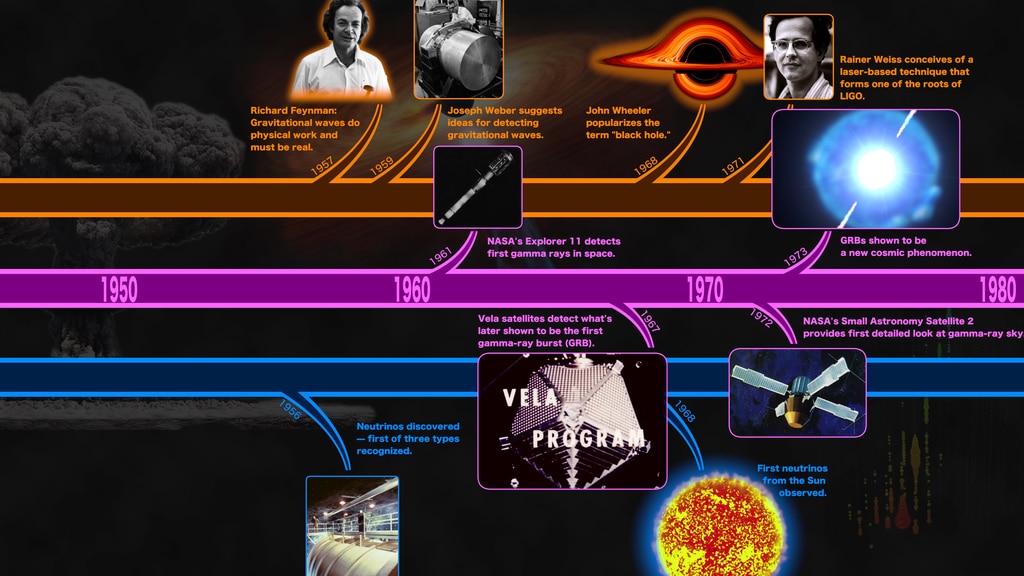Multimessenger Timeline Resources
The media elements below appear in the multimessenger astronomy video "Luck Favors the Prepared." A simple animation of a gamma ray moving through space. Credit: NASA's Goddard Space Flight Center This animation illustrates cosmic ray particles striking Earth's atmosphere and creating showers of particles. Credit: NASA's Goddard Space Flight Center An artistic animation of the Sun. Credit: NASA's Goddard Space Flight Center A visualization of a black hole and its surrounding accretion disk. Credit: NASA's Goddard Space Flight Center/Jeremy Schnittman NASA's Gamma-Ray Imaging Spectrometer (GRIS) is readied for its fifth balloon flight at Alice Springs, Australia, in 1992. The experiment made nine trips into the stratosphere for a total flight time of 223 hours. Credit: NASA's Goddard Space Flight Center/Steve Snodgrass The Italian-Dutch satellite BeppoSAX played a crucial role in resolving the origins of gamma-ray bursts (GRBs), brief, powerful explosions initially discovered in 1967 by the U.S. Vela satellites. On Feb. 28, 1997, moments after a GRB was detected, BeppoSAX turned its X-ray telescopes to the location and spotted an X-ray afterglow -- the first GRB observation in a wavelength other than gamma rays. The satellite's accurate positions, together with other observations, showed that GRBs originate beyond our Milky Way galaxy. Credit: BeppoSAX Science Data Center and Agenzia Spaziale Italiana Shown here is a computer simulation of the merger of two black holes and the resulting emission of gravitational radiation. Colored fields represent a component of the curvature of space-time. The outer red sheets correspond directly to the outgoing gravitational radiation detected by gravitational-wave observatories. The brighter yellow areas near the black holes do not correspond to physical structures but generally indicate where strong non-linear gravitational-field interactions are in play. Credit: NASA/C. Henze Please give credit for this item to:
This page was originally published on Thursday, November 8, 2018.
Credits
NASA's Goddard Space Flight Center. However, individual items should be credited as indicated above.
Producer
Science writer
Release date
This page was last updated on Wednesday, May 3, 2023 at 1:46 PM EDT.
Missions
This page is related to the following missions:
Series
This page can be found in the following series:
You may also like...
